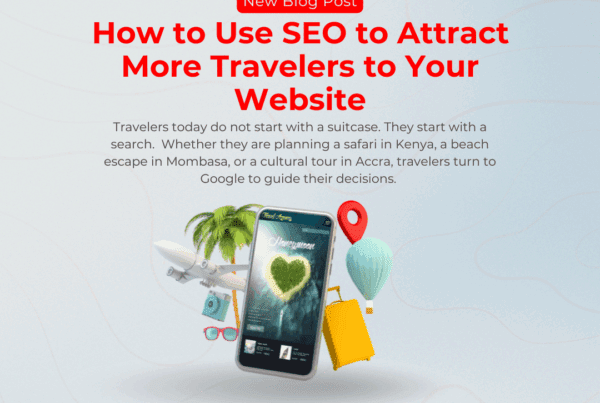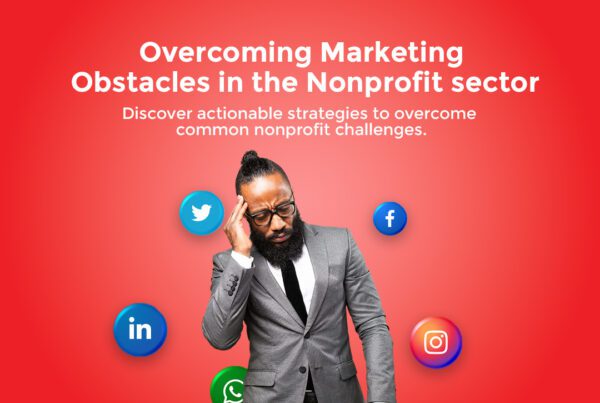Are you wondering what you need to build your non profit website? In the vibrant world of non-profits, where every penny counts and every voice matters, your website is more than just a digital brochure. It’s the bridge that connects you to passionate supporters, dedicated volunteers, and generous donors. It’s the platform that amplifies your mission, showcases your impact, and fuels your ability to make a difference.
But with so many features and functionalities available, building a website that truly serves your unique needs can feel overwhelming. That’s where this guide comes in. Whether you’re starting from scratch or revitalizing an existing site, we’ll equip you with the essential features and best practices to build a website that resonates, inspires, and empowers your non-profit to achieve its full potential.
Accept Donations
Your non-profit website is the cornerstone of your fundraising efforts. It’s where potential donors first encounter your mission, connect with your impact, and ultimately decide to support your cause. Making the donation process smooth, secure, and transparent is crucial for converting that initial spark of interest into tangible action. Here are some key features that ensure a seamless and satisfying donation experience, leaving your supporters feeling empowered and eager to contribute again and again:
Donation Button: Place a prominently displayed donation button on your website’s homepage and other relevant pages to encourage spontaneous giving. Make sure it stands out visually and is easily accessible.

Secure Payment Processing: Utilize secure payment gateways such as PayPal, Mastercard, Visa, PesaPay, and M-Pesa, to ensure donors’ financial information is protected. M-Pesa allows donors to contribute directly from their mobile phones, offering a convenient and secure alternative. Trust and security are paramount when soliciting donations online.
Recurring Donations: Provide options for recurring donations to encourage sustained support from donors. Clearly outline the benefits of recurring contributions and make the setup process straightforward.
Donation Tracking: Implement a system to track and acknowledge donations in real-time. Transparency regarding donation usage instills trust and accountability among donors.
Recruit and Manage Volunteers
Volunteers are the lifeblood of many non-profits, their dedication and diverse skillsets fueling the mission and amplifying impact. To harness this incredible potential, your website needs to be more than just an informational hub; it should become your central platform for volunteer recruitment, management, and engagement. Here’s how:

Volunteer Opportunities: Create a dedicated section or page listing available volunteer positions, along with detailed descriptions and requirements. Make it easy for potential volunteers to express interest and sign up.
Volunteer Registration: Implement an online registration form that collects essential information from volunteers. Streamline the process by integrating with your volunteer management system, if applicable.
Volunteer Portal: Provide registered volunteers with access to a personalized portal where they can view upcoming opportunities, track their hours, and communicate with staff and fellow volunteers.
Testimonials and Success Stories: Showcase testimonials from past and current volunteers to highlight the impact of their contributions. Authentic stories resonate with potential volunteers and inspire them to get involved.
Event Promotion, Registration, and Payment
Events are powerful catalysts for non-profits, igniting community engagement, fostering awareness, and fueling fundraising efforts. To maximize their impact, your website needs to be a central hub for seamless event promotion, registration, and payment. Consider the following features:

Event Calendar: Maintain an updated calendar showcasing upcoming events, including fundraisers, workshops, and community gatherings. Allow users to filter events based on their interests and preferences.
Online Registration: Enable users to register for events directly through your website, eliminating the need for manual registration processes. Collect necessary information and provide confirmation emails with event details.
Ticket Sales: If your events require ticket purchases, integrate a secure ticketing system that accepts online payments. Offer early bird discounts or promotional codes to incentivize ticket sales. The most reliable event ticketing platforms in Kenya you can partner with include: Mookh, TicketSasa, KenyaBuzz, EventBrite and M Tickets.
Event Reminders: Send automated email reminders to registered attendees leading up to the event date. Include logistical information, agenda details, and any last-minute updates to ensure a seamless experience.
Content Management System
A robust content management system (CMS) empowers nonprofit organizations to create, update, and manage website content efficiently. Investing in a powerful yet user-friendly CMS is not just about creating content; it’s about amplifying your voice, empowering your team, and maximizing your website’s potential to connect, inspire, and make a difference. The most popular easy to use content management systems on the market are, WordPress, GoDaddy, Joomla PimCore and Magento. Here’s why it’s essential:

User-Friendly Interface: Choose a CMS that is intuitive and easy for staff members with varying technical expertise to navigate. Simplified content editing tools streamline the process of adding new pages, blog posts, and multimedia content.
SEO Optimization: Optimize your website for search engines to increase visibility and attract organic traffic. Leverage SEO-friendly features within your CMS, such as meta tags, sitemaps, and customizable URLs.
Mobile Responsiveness: Ensure your website is fully responsive across all devices, including smartphones and tablets. A mobile-friendly design enhances user experience and improves search engine rankings.
Analytics Integration: Integrate web analytics tools like Google Analytics to track website performance, monitor traffic trends, and gain insights into user behavior. Use data-driven insights to refine your content strategy and optimize donor flow.
Resource Sections
Your non-profit website isn’t just a space to raise funds or recruit volunteers; it’s also an opportunity to empower your community with knowledge and resources. By dedicating sections to educational materials, insightful reports, or success stories related to your cause, you reinforce your organization’s credibility and position yourselves as a trusted source of information. Consider the following resource sections:

Document Library: Create a repository of downloadable resources such as reports, whitepapers, and toolkits related to your nonprofit’s mission and initiatives. Organize documents by category and include brief descriptions for easy browsing.
Blog or News Section: Maintain a blog or news section where you can publish timely articles, success stories, and industry updates. Regularly updated content not only keeps visitors engaged but also improves SEO rankings.
Multimedia Gallery: Showcase photos, videos, and infographics that visually communicate your organization’s impact and accomplishments. Use compelling visuals to evoke emotion and convey your message effectively.
FAQ Page: Anticipate common questions and concerns from website visitors and address them in a dedicated FAQ page. Clear and concise answers demonstrate transparency and alleviate any doubts or uncertainties.
Link to Other Tools (Slack, MailChimp, Social Media)
To truly maximize your website’s potential, consider integrating essential third-party tools and platforms that streamline communication, collaboration, and outreach efforts. These integrations can transform your website from a static platform into a dynamic hub, boosting efficiency and amplifying your impact. Here are some useful integrations to consider:

Slack Integration: Connect your website with Slack to facilitate internal communication and collaboration among team members. Create channels for different projects or departments to streamline workflows and share updates in real-time.
MailChimp Integration: Sync your website with MailChimp to automate email marketing campaigns and newsletters. Capture visitor email addresses through signup forms and segment your audience for targeted communication.
Social Media Integration: Enable social sharing buttons on your website to encourage visitors to share your content across various social media platforms such as Facebook, Instagram, Twitter and TikTok. Foster community engagement through and expand your reach through user-generated content.
Update and Manage Your Site
Think of your website as a garden – it thrives with consistent care and attention. While building a beautiful and functional website is crucial, neglecting its upkeep can lead to a wilting presence, potentially deterring visitors and impacting donor engagement. That’s why regular updates and effective management are essential for keeping your website vibrant and relevant. Implement these best practices for ongoing site management:
Regular Content Updates: Dedicate time to regularly update your website with fresh content, including blog posts, event announcements, and success stories. Stale or outdated content can deter visitors and harm your SEO efforts.
Security Measures: Implement robust security measures to protect your website from cyber threats and unauthorized access. Keep software, plugins, and CMS versions up to date to mitigate vulnerabilities.
Backup Procedures: Establish regular backup procedures to safeguard your website’s data and content. In the event of a technical issue or data loss, having backups readily available ensures minimal disruption to your operations.
Performance Optimization: Monitor website performance metrics such as page load speed and server response time. Optimize images, minimize code, and leverage caching mechanisms to improve site performance and user experience.
To Sum Up
In the world of non-profits, where every click and action counts, your website isn’t just a digital presence – it’s a bridge of hope, connecting you to the passionate individuals and dedicated communities who fuel your mission. By incorporating the essential features explored in this blog, you can build a platform that resonates, inspires, and empowers your organization to achieve its full potential.
CHARLESON® understands the unique challenges and opportunities faced by non-profit organizations. We’re not just website designers and developers; we’re passionate partners dedicated to helping you achieve your goals. With extensive experience in the marketing for impact organizations, we bring expertise, empathy, and a commitment to crafting websites that resonate, inspire, and empower.
We offer a comprehensive suite of services, from strategic planning and design to development, integration, and ongoing maintenance. We speak your language, understand your needs, and are committed to creating a website that reflects your unique spirit and values.
Ready to transform your online presence and unlock the full potential of your website? Contact CHARLESON® today, and let’s embark on this journey together. Together, we can build a website that becomes a legacy for good, making a lasting impact on the world and propelling your mission to even greater heights.





One Comment